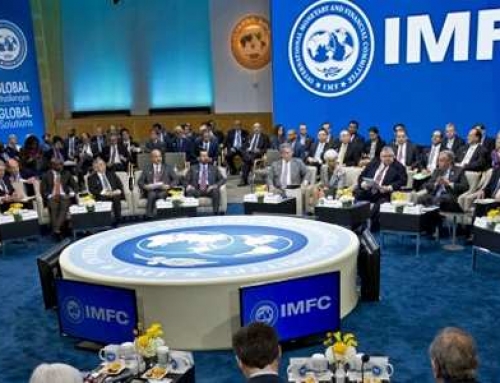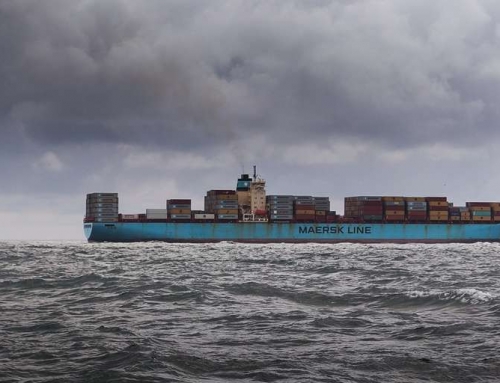Global Shortage Of Trade Finance Is Crushing Small Business
The worldwide shortage of trade finance has reached $1.6 trillion US according to a recent study by the Asian Development Bank. A shortage of trade finance of this magnitude is having a crushing effect on small businesses worldwide, many of whom cannot find trade finance for their business. The International Chamber of Commerce ICC 2016 Global Survey on Trade Finance, which reflects the issues and trends of the trade finance industry, reveals that 61% of national, regional and global banks that provide trade financing reported a worldwide shortage of trade finance.
While the worldwide shortage of trade finance impacts businesses across the globe, small to medium-sized enterprises (SMEs) are being squeezed the hardest. According to the survey, a disproportionate 58% of rejected trade finance proposals are from SMEs, even though only 40% of finance proposals were SME applications.
Data from the report reveals that 90% of trade finance providers cited the cost and complexity of compliance requirements relating to new regulations regarding anti-money laundering (AML), know your customer (KYC) and sanctions as primary reasons for constraining the global flow of capital. Another 77% of financing providers cited new regulatory requirements as significant impediments to trade finance. In addition to their rejection of increasing compliance and regulation, many global banks are withdrawing from many global emerging markets due to domestic political pressure to favor domestic – not global – customers.
Worldwide Shortage of Trade Finance
For the fifth consecutive year, trade growth has remained below 3 percent and still has not recovered to pre-crisis levels, which is particularly concerning as we continue to observe a period of prolonged sluggishness when it comes to global trade growth. There are various ways in which the industry can adapt to not only bridge the gap in unmet demand for finance and help revive global growth but also to evolve the industry, to drive healthy competition and to remove the focus from being global-bank dependent.
Improving the worldwide shortage of trade finance means improving understanding and attitudes toward trade and awareness around trade finance would be a good place to start. Across the world, many have attacked trade and globalization for threatening jobs and benefitting only big businesses—sentiments that have been evident across the European Union and the United States during the recent US presidential election campaign.
Indeed, we’ve seen a clear rise in protectionist and populist policies—a recent World Trade Organization report cited that between mid-October 2015 and mid-May 2016, G20 economies had introduced new protectionist trade measures at the fastest pace since 2008. To address this, we need to first make the case for trade itself in order to highlight the importance of trade finance. It is, therefore crucial that businesses and trade finance industry stakeholders reinvigorate the narrative around global trade, relaying its significance to the public and ensuring that trade is on the agenda of policymakers worldwide.
Understanding The Shortage Of Trade Finance
Enhancing awareness around trade finance should also remain a top priority. While there has already been significant progress in the dialogue between trade finance providers and regulators, and a noticeable shift towards a more suitable risk-aligned treatment of trade finance, it is crucial that we continue to emphasize the low-risk nature of trade finance instruments.
Indeed, ICC’s 2015 Trade Register report highlights the low-risk nature of trade finance products citing favorable credit and default risk experience. For instance, the Trade Register shows that there is a low default rate across all short-term trade finance products, with the average expected loss for short-term trade finance lower than typical corporate exposures. In particular, traditional documentary trade finance products such as letters of credit (LC) are low risk. Remarkably, the transaction default rate for export letters of credit from 2008 to 2014 was only 0.01 percent. Medium- to long-term products also fare well, with a low loss nature due to the export credit agency’s (ECA) guarantee—normally with investment-grade ratings and backed by the government and quasi-government agencies.
Move To Ease Regulations
The need for increased awareness around the shortage of trade finance extends well beyond traditional trade finance and also includes newer techniques and instruments within supply-chain finance. We also need to raise industry understanding around compliance measures—differentiating between client KYC and non-client KYC, for instance, in order to ease processes. In addition, enhanced awareness and understanding in relatively unsettled areas in trade finance, such as trade-based money laundering, would help direct compliance measures. Despite common belief, for instance, only a small percentage of trade-based money laundering actually occurs in trade finance transactions.
Yet while progress has certainly been made with regulation and compliance proposals, the Global Survey suggests that the costs associated with such measures are still, and will perhaps continue to be, prohibitive. As such, if we want to close the trade finance gap, we need to move slightly away from a global bank-dominated financial landscape and embrace collaboration.
Technological Innovations
Financial technology firms are increasingly shaping the future of trade finance, and make an obvious banking partner, with both parties bringing strengths and expertise to such arrangements. Indeed, many financial technology firms are looking to partner with—rather than compete with—banks due to balance-sheet requirements, the regulatory framework to navigate, and the industry expertise required to bring new concepts to fruition. Certainly, partnerships between the two players could drive additional efficiencies and the capacity of banks to conduct business—perhaps eventually reducing the trade finance shortage.
Financial technology firms aren’t the only players that could potentially collaborate with banks—or even fill the trade finance gap independently. The Global Survey found that export credit agencies (ECAs) are increasingly supporting export finance, with alternative liquidity flowing into the ECA space. Thirty-seven percent of respondents reported that they had successfully concluded business with institutional investors in ECA finance, up from 30 percent in the previous survey in 2015, reflective of the growing role of alternative investors.
The Global Survey also highlighted the important role of multilateral development banks (MDBs), with 75 percent of respondents agreeing that MDBs (and ECAs) help reduce trade finance gaps. In particular, MDBs provide financial assistance to emerging markets for investment projects and policy-based loans. This can prove crucial for enabling access to trade finance in general, and for SMEs.
The ADB’s Trade Finance Program (TFP), for instance, fills market gaps for trade finance by providing guarantees and loans through more than 200 banks. The TFP has supported more than 12,000 transactions across Asia, valued at over US$23.1 billion—of which more than 7,700 involved SMEs. What’s more, the TFP focuses on markets in which the private sector has less capacity to provide trade finance, and where there are large trade finance gaps.
However, the Global Survey also indicated that MDB and ECA support varies by region—with respondents deeming it most effective in advanced Asia, Russia, and sub-Saharan Africa, and less effective in Commonwealth of Independent States (CIS) countries, India, Central America and the Caribbean. Clearly, an increase in the envelope and effectiveness of MDB trade finance provision in these regions will help further reduce the gap. In order to counter geographical disparities, the next step for MDBs is to consider any structural limitations in existing trade finance programmes—or contextual difficulties in particular markets.
Finally, non-bank capital provides another useful source of trade finance, particularly from private-sector sources of trade funding – such as specialist financiers or alternative finance providers, like Global Trade Funding. Since the 2008 financial crisis, these financiers have played an increasingly crucial role in meeting unmet demand, and have experienced considerable growth. What’s more, specialized financing is growing increasingly popular among companies in emerging markets, in which trade finance demand is most acute.
Revamping Trade Finance
One way to possibly boost the provision of trade finance is to make it more efficient and attractive. Certainly, the digitalization of trade finance holds huge potential. Automating trade finance can make overall processes more effective and reliable, increasing capacity for banks, corporates and other stakeholders along the supply chain. For instance, eDocs (paperless documents) streamline processes, with the ability for multiple parties to access, review and collaborate at any one time. The resulting operational improvements, in turn, reduce errors, maintain data integrity and accelerate the completion of agreements.
Despite the clear benefits, the Global Survey shows that there has been a slow uptake of digitalization. In fact, one-fifth of respondents reported that there is no evident digitalization at all, two-thirds saw very little impact of technology on trade finance, and just over 7 percent saw digitalization as being widespread. The slow uptake is likely due to the challenges of digitalizing trade—including the considerable scale and complexity of the task at hand, for instance. Banks should play a key role in advocating the benefits of digitalization and help their corporate clients adapt to new systems.
The global shortage of trade finance was caused by the imposition of regulations that restrict trade finance by world governments. The fact of the matter is that no private sector attempts at remediation, no matter how innovative, will relieve the worldwide shortage of trade finance.








